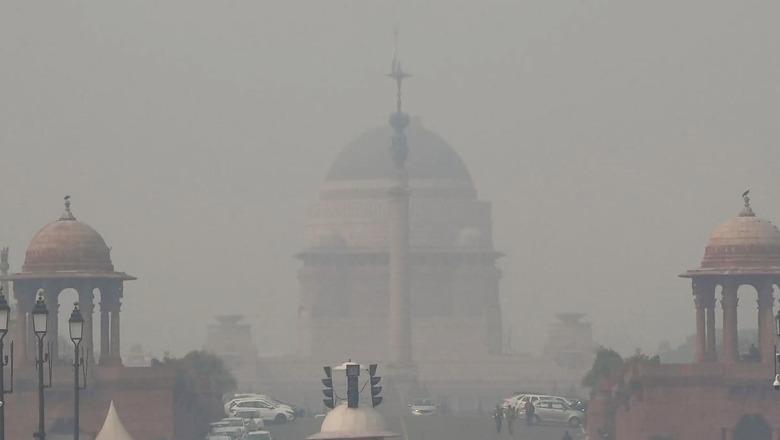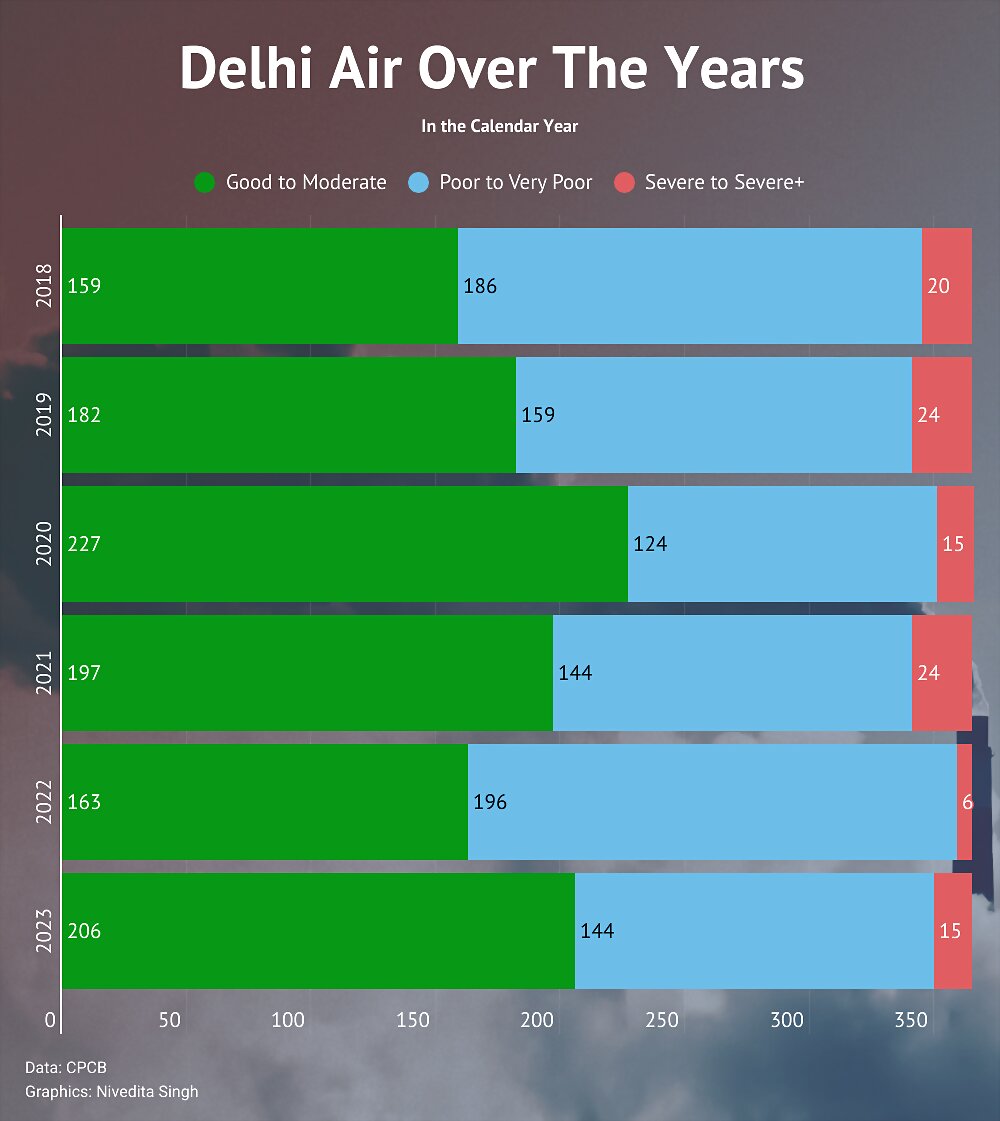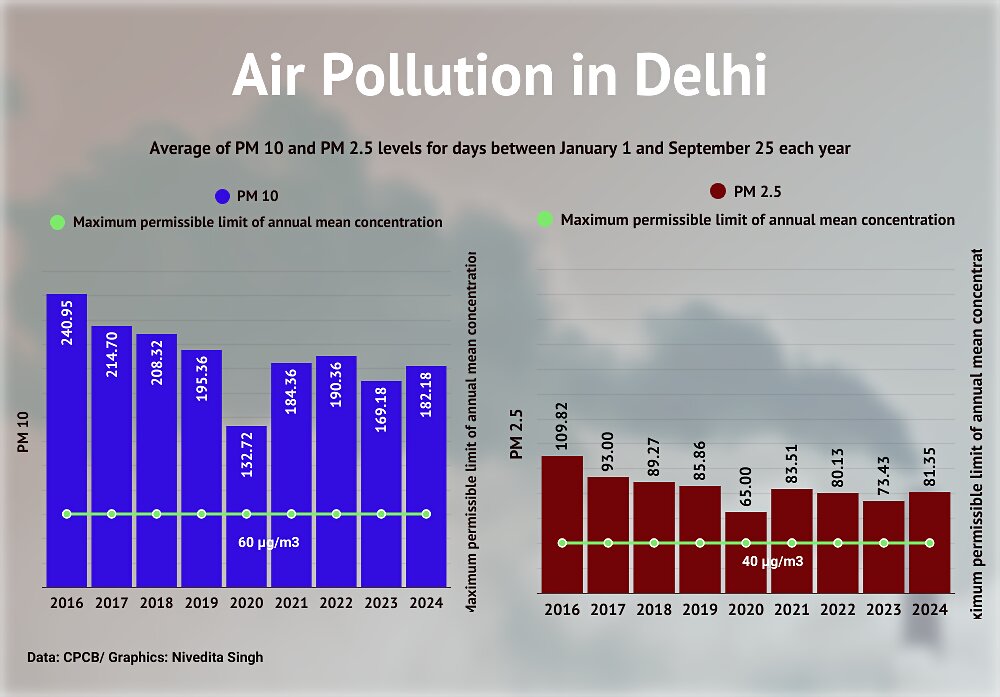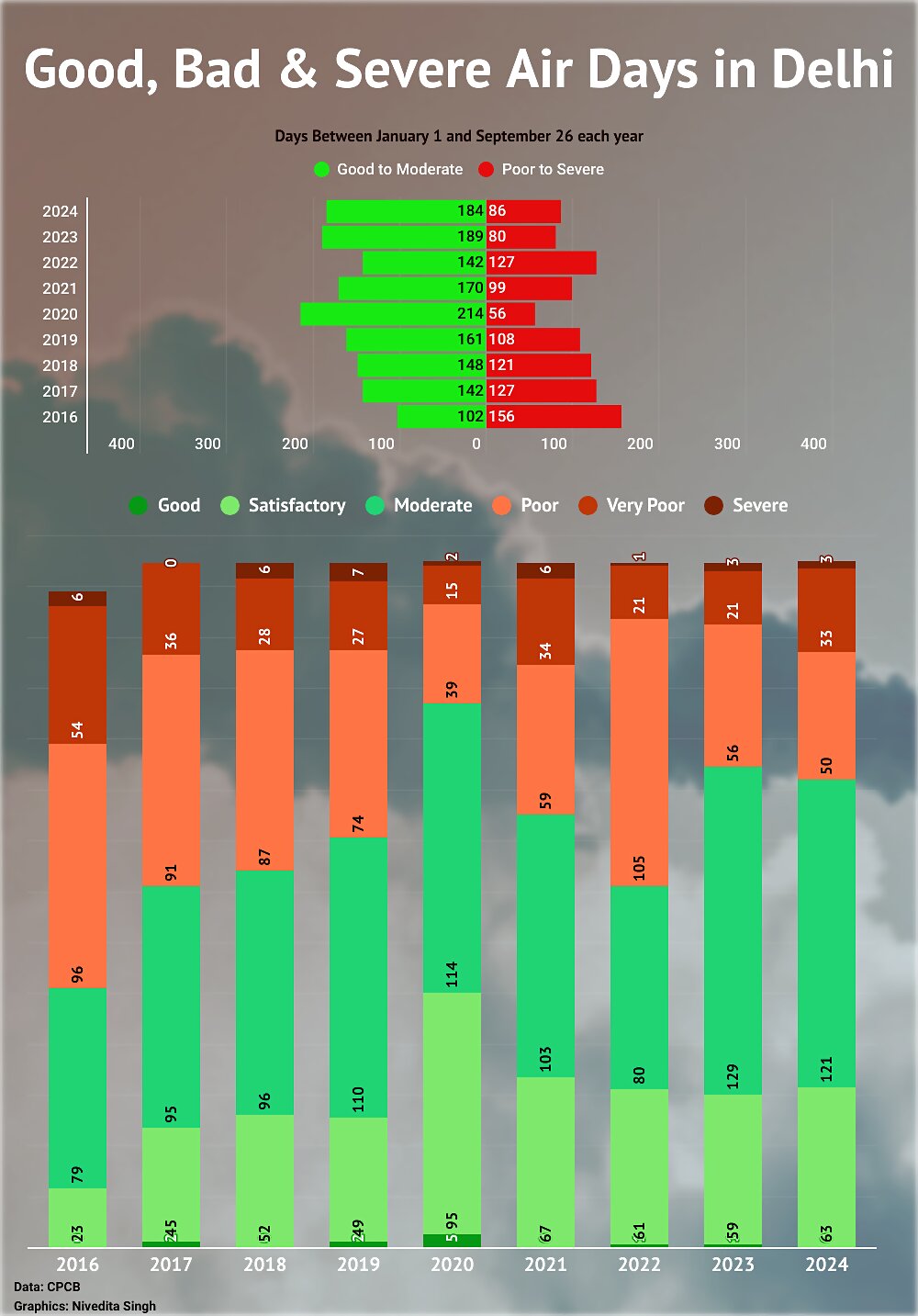
views
As per the data from the Central Pollution Control Board (CPCB), there were 189 days with good to moderate air quality last year while 86 days with poor to severe quality. It is also important to note that there’s an additional day in 2024 as it is a leap year.
Heavy breathing
The official data shows that 2024 saw more days with ‘satisfactory’ air quality while fewer days with ‘moderate’ air when compared to 2023. On the other hand, in the three categories of bad air quality days, there were more ‘very poor’ air days than in 2023 and an equal number of ‘severe’ air days. The situation though was better this year in the ‘poor’ category.
As per the CPCB, an AQI of 50 or lower is considered as ‘good’, between 51 and 100 as ‘satisfactory’, between 101 and 200 as ‘moderate’, between 201 and 300 as ‘poor’, between 301 and 400 as ‘very poor’, and over 400 as ‘severe’.
The situation this year looks bad as 2023 had exceptionally better air when compared to the last few years except 2020 when a nationwide lockdown was imposed restricting the movement of people due to the spread of the novel coronavirus infection. In the last few years, since 2018, only twice the number of good to moderate days crossed the 200 mark. In 2020, there were 227 ‘good to moderate days’ and 2023 had 203 such days.
Barring 2020, the year 2023 witnessed four months – March, April, June, and July – with the best daily average Air Quality Index (AQI) and three months – January, February, and May – with second-best daily average AQI during the entire period from 2018 to 2023.
Further, the number of days with severe and severe+ Air Quality Index was 15 during 2023, which is the second-best figure for the period between 2018 and 2023.



The PM10 and PM2.5 levels this year have also surpassed last year’s levels. According to the World Health Organization, from smog hanging over cities to smoke inside homes, air pollution poses a major threat to health and climate.
Ambient air pollution in both cities and rural areas is producing fine particulate matter which results in strokes, heart diseases, lung cancer, and acute and chronic respiratory diseases.
Annually recurring issue
Every year, with the onset of winter, the air quality of the national capital starts to deteriorate with a thick smog covering the entire region. Certain weeks are so bad that schools have to shut down for days.
The reason behind this, as per the government, is that the city is landlocked and has limited resources. Rapid urbanisation, industrial and construction activities and an increase in the number of vehicles in and around the city contribute to the environmental problems. Topping that is the burning of crop residue (parali) in the NCR and neighbouring states in winter months.
The city’s environment is highly influenced by different meteorological phenomena. In summers, the particulate is influenced by dust storms from Rajasthan, and in winter by calm conditions and inversion as well as biomass burning in NCR.
The situation worsens around Diwali each year with the use of firecrackers, which are officially banned in the region. Diwali will be celebrated on November 1 and usually, the week around that is critical.



















Comments
0 comment